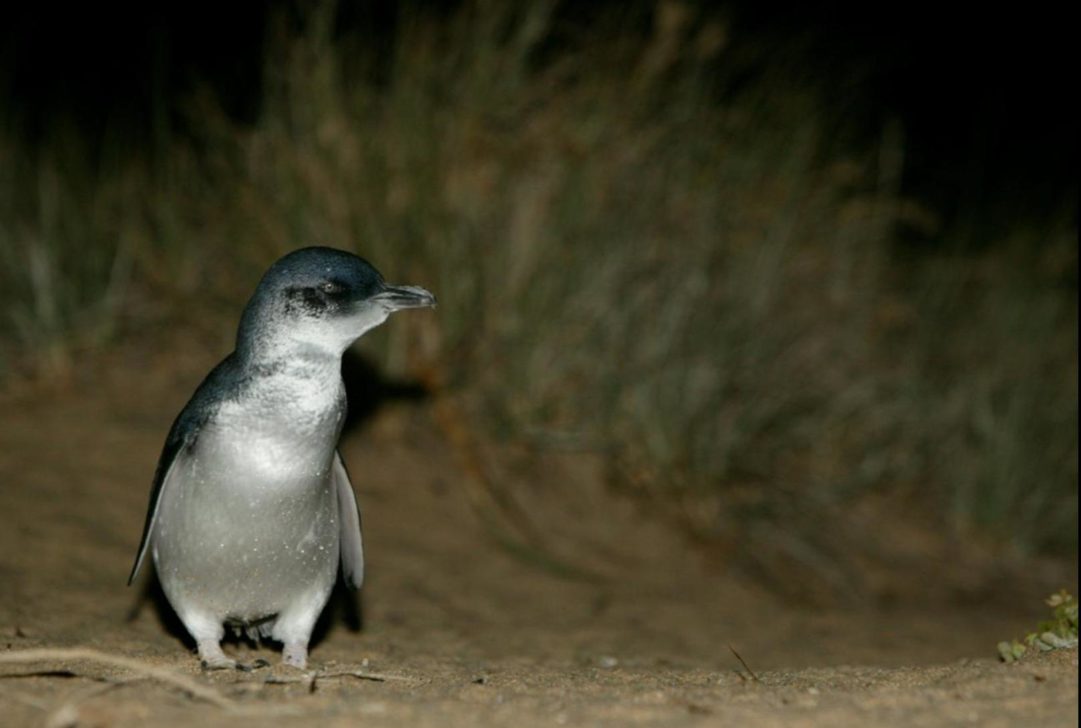Introduction:
Phillip Island is situated at the entrance of Western Port on the central coast of Victoria. It has an area of 100 km2and was connected to mainland Australia in 1947 by a short (640m) bridge. Foxes were first reported on the island in 1907. Fox predation threatens much of the island’s wildlife, particularly ground nesting birds and seabirds such as little penguins (Eudyptula minor), short-tailed shearwaters (Ardenna tenuirostris) and hooded plovers (Thinornis rubricollis). Foxes also impact on lamb survival.
Fox predation is considered the greatest land-based threat to the long-term viability of the penguin colonies on Phillip Island, one of Victoria’s leading tourist attractions. Regular fox control for 20 years up to 2006 had reduced the fox population, but penguins continued to be preyed upon. It was decided that an eradication program should be put in place, before penguin losses and escalating costs of fox control threatened the tourism industry and its benefits to the local and state economy. The eradication program began in 2006.

Little penguin. Image: Phillip Island Nature Parks

Dead Little penguin with fox tracks. Image: Richard Dakin
Partners and management:
An important aspect of this program is to foster partnerships and maintain a high level of public communication. The lead agency, Phillip Island Nature Parks, is supported by the Phillip Island Landcare Group, local farmers and state government agencies. Over the years, funding has been secured from state and federal government agencies, and private funding bodies.
Process:
There are three phases to this program: ‘knock-down’, ‘clean-up’, and ‘post-eradication’.
The knock-down phase began in 2006 and focused on island-wide 1080 poison baiting. This was supported by a suite of other techniques including: spotlight shooting, trapping, den fumigation and destruction, and hunting with dogs. The timing of each method’s application was arranged to avoid the summer tourist season — when visitors (with pets) quadruple the human population — and the migratory behaviour of shearwaters, a huge food source for the foxes during September–April. Consequently there was a strong emphasis on winter programs. Rabbits were an important food source for foxes at this time of year, so were also controlled where possible. Monitoring of success during the knock-down included detailing catch rates, effort, fox sign (tracks and scats) and changes to prey (wildlife) populations.
An effective knock-down was declared in 2011, when fox sign, sightings and catch-effort data suggested there had been a decimation in the fox population (ie to one tenth of the 2006 level).
Now in the clean-up phase, the program needs further effort. In addition to the island-wide baiting effort, more intensive baiting with a range of bait types is also planned for all sites with any fox sign. Genetic data suggests that migration to the island is at a rate of one fox every five years, so there is increased effort to try and reduce this migration. The Phillip Island team is in close collaboration with the Tasmanian Fox Eradication Branch, using their scent dogs to locate fox scats on Phillip Island. Any scats collected then undergo genetic analysis.
A decision framework for when to declare the island fox-free is being developed. Modelling will provide estimates of levels of confidence that eradication has been successful, based on particular levels of search effort and time after the last fox sign is recorded. Once eradication has been officially recognised, the program will switch to post-eradication phase. This will focus on preventing new fox migrants while maintaining an island-wide vigil for fox sign.
Features of the study:
This program targeted an entire, semi-isolated fox population and took mainland migrants into account. Positive outcomes have been achieved so far due to the consistent island-wide baiting program, the dedicated staff, the long-term funding, the public awareness campaign to promote fox-free Phillip Island, and the integration with other pest management (eg rabbits, cats, boxthorn and gorse). This program features an effective monitoring and evaluation program, and is proactive in ongoing research programs.
Results:
Effective knockdown was achieved in five years. This was shown by reductions in fox sign and catch per unit effort, a sustained reduction in little penguin predation and an increase in the number of ground-nesting birds on the island. Modelling suggests the fox population was reduced from 150–200 individuals in the early 2000s to 20–30 individuals in 2011.
What worked and why:
- The review by an ‘external expert’ galvanised management support for the eradication attempt.
- Having a long-term (5+ years) commitment to funding, dedicated staff, and coordinated baiting on public and private land was crucial to the program’s success.
- The geography of the area — a semi-contained (‘island’) population — helped minimise the impacts of foxes migrating into the created ‘fox vacuum’.
What didn’t work and why:
- A reluctance to bait in a coordinated way island-wide (pre-2004), due to perceived dangers to domestic animals and expertise in shooting and trapping (which are less efficient techniques), delayed the program.
- Efforts to get effectively trained dogs to work in local conditions failed and distracted the focus of the program.
- Communications strategy did not convince all stakeholders of the need to maintain baiting in all areas, when foxes were no longer obvious.
Conclusion:
Eradication of foxes on Phillip Island looks to be achievable, as long as resource levels are kept up and migration sites can be controlled.
Further information:
- Berry O and Kirkwood R (2010). Measuring recruitment in an invasive species to determine eradication potential. Journal of Wildlife Management 74(8): 1661-1670.
- McPhee S and Bloomfield T (2004). Strategy for the Eradication of Foxes from Phillip Island, Part 2: Detailed Review of the Eradication Strategy. Unpublished report prepared for the Phillip Island Nature Parks.
More info:
Pestsmart Toolkit for European foxes
Invasive Animals Ltd has taken care to validate the accuracy of the information at the date of publication [May 2012]. This information has been prepared with care but it is provided “as is”, without warranty of any kind, to the extent permitted by law.













